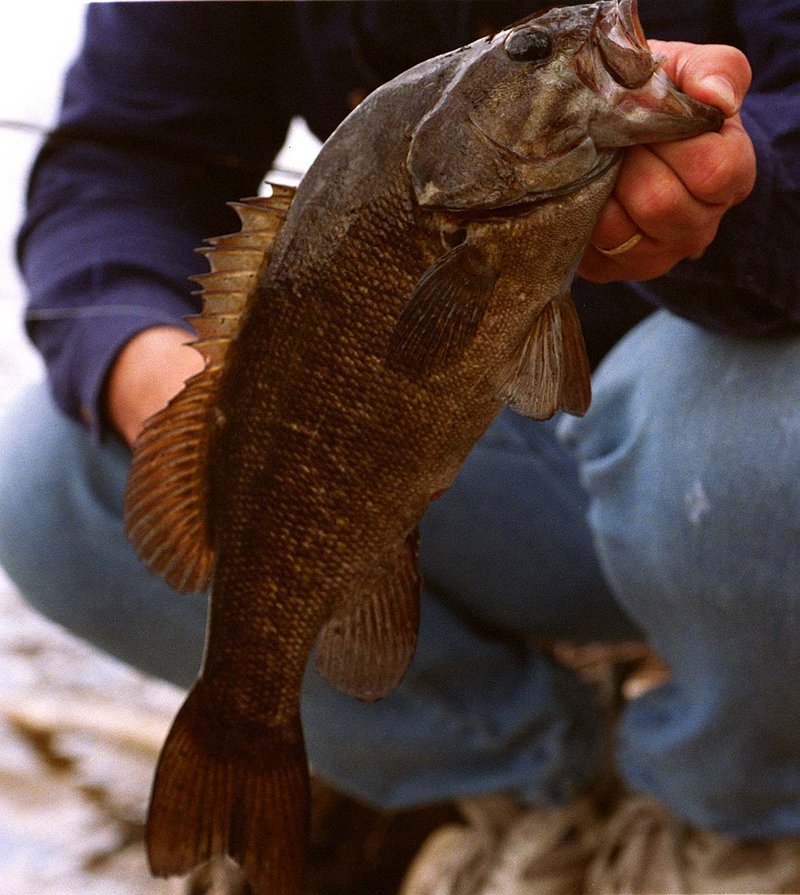Fishing and canoeing are two of my favorite summertime activities. I particularly enjoy when I get to combine the two.
Early in the summer, it’s a thrill to sight fish for brook trout and salmon on the evening rise. Paddling stealthily in the direction of a large, feeding brook trout is both challenging and occasionally rewarding.
When the weather warms, I enjoy canoeing down some of Maine’s rivers in search of smallmouth bass. Maine has some fantastic smallmouth bass rivers that are uncrowded, scenic, easy to get to and have excellent boating access.
Exactly where to go is as easy as grabbing your well-worn DeLorme Gazetteer or taking a look at the Maine Fishing Guide at www.mefishwildlife.com. Boating access sites are well-marked on both.
Maine’s big rivers are largely underutilized for fishing. For years, they were an industrial pathway that carried logs, wastewater, and who knows what else away from our cities and villages.
Talk to old-timers and they will tell you that on some days they could tell what color clothes they were making in the mill just by the color of the water. They also said the stench from the water kept anyone from building along the rivers.
For those reasons, much of these rivers’ shoreline is undeveloped, fairly pristine and a welcome fishing escape.
“There is plenty of bass habitat in Maine’s rivers, particularly for smallmouths,” says Scott Davis, an Inland Fisheries and Wildlife fisheries biologist.
In southern and western Maine, the Androscoggin offers fine fishing and great access. Check out the Durham and Brunswick portions, as well as the Rumford, Dixfield, and Canton sections.
In Central Maine, you can have great action on the Kennebec River from Waterville to south of Augusta. The Sebasticook from Pittsfield through Burnham and into Clinton and Benton also is fantastic.
If you are willing to go a little further north, the Penobscot and the Piscataquis hold great promise for any angler.
River fishing is similar to lake fishing but has its differences. Fish will still congregate around structure and depth changes, but even subtle changes in structure will hold fish. Also, in order to properly fish an area, you need to stay in position.
“If you don’t have an anchor, you are just scratching the surface of where you can fish,” says Davis.
A bow-mounted anchor is a necessity. Without it, you’ll drift past holding spots too fast, missing opportunities for fish. Anchoring with the bow into the current is the safest way to anchor in a river.
In large pools and deep bends, you will find the bass where the food is likely to be directed by the current, and oftentimes there will be a number of bass stacked up.
Fish the head of the pool where it begins to drop off and deepen. Fish will hold there waiting for food to drop in. In the slower, deeper water of the bend, look for riffles or other water turbulence indicating submerged structure. The tail of the pool will also hold more fish as they wait for food to wash by.
While canoeing, look for structures that you would find in a lake, such as fallen trees or points that jut out. Large boulders or man-made cribworks offer respite from the current for smallmouth bass.
Anglers should also look for changes in the river bottom when seeking holding spots for fish.
“Look for abrupt habitat changes — grasses to gravel, shallow to deep, mud to gravel, that’s where you will find multiple fish holding,” says Davis.
What to use when you are fishing is often a question. Most of these rivers are not particularly deep, so some sort of topwater lure is not only effective, but can be very exciting as fish explode to the surface attacking your lure.
Floating Rapalas and Rapala X-raps, Zara Spooks, Heddon Torpedos and other topwater baits are all fine choices to entice smallmouths up to the surface.
Cast out to a likely bass holding spot and twitch it. If there is a fish there, it will attack. Avoid the temptation to set the hook immediately, wait until you see the lure go under before setting the hook. If the fish misses it, keep it right there.
“Bass will swipe at the lure. If you keep it there, they will attack it again, thinking its stunned or injured,” says Davis.
And don’t be quick to move on. If there is one fish there, there likely are more, all of them adding up to a memorable day on the water.
Mark Latti is a Registered Maine Guide, and the Landowner Relations/ Recreational Access Coordinator for the Department of Inland Fisheries and Wildlife.
Send questions/comments to the editors.



Success. Please wait for the page to reload. If the page does not reload within 5 seconds, please refresh the page.
Enter your email and password to access comments.
Hi, to comment on stories you must . This profile is in addition to your subscription and website login.
Already have a commenting profile? .
Invalid username/password.
Please check your email to confirm and complete your registration.
Only subscribers are eligible to post comments. Please subscribe or login first for digital access. Here’s why.
Use the form below to reset your password. When you've submitted your account email, we will send an email with a reset code.